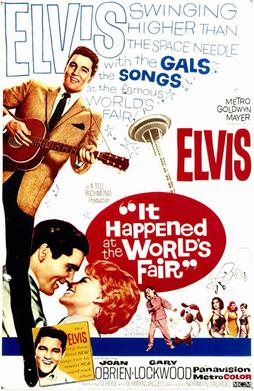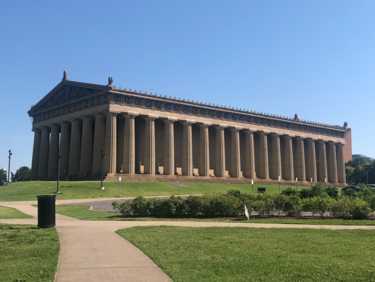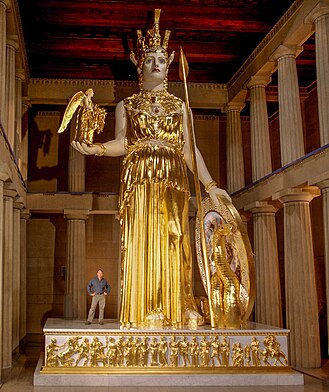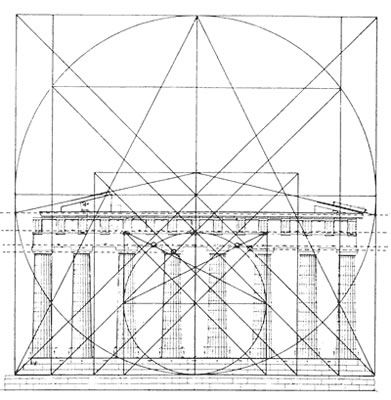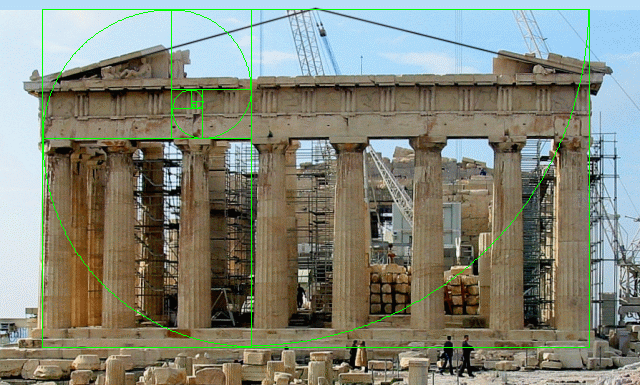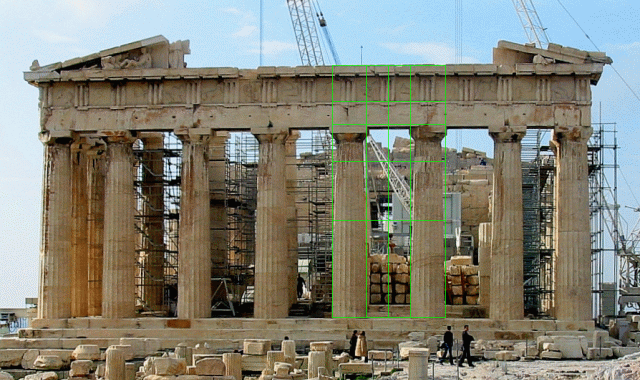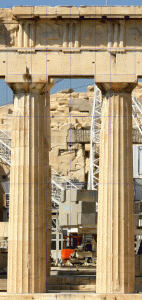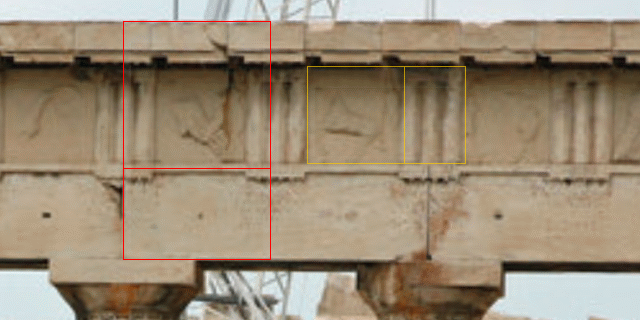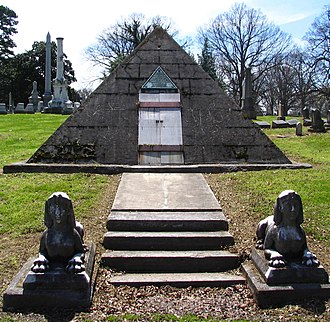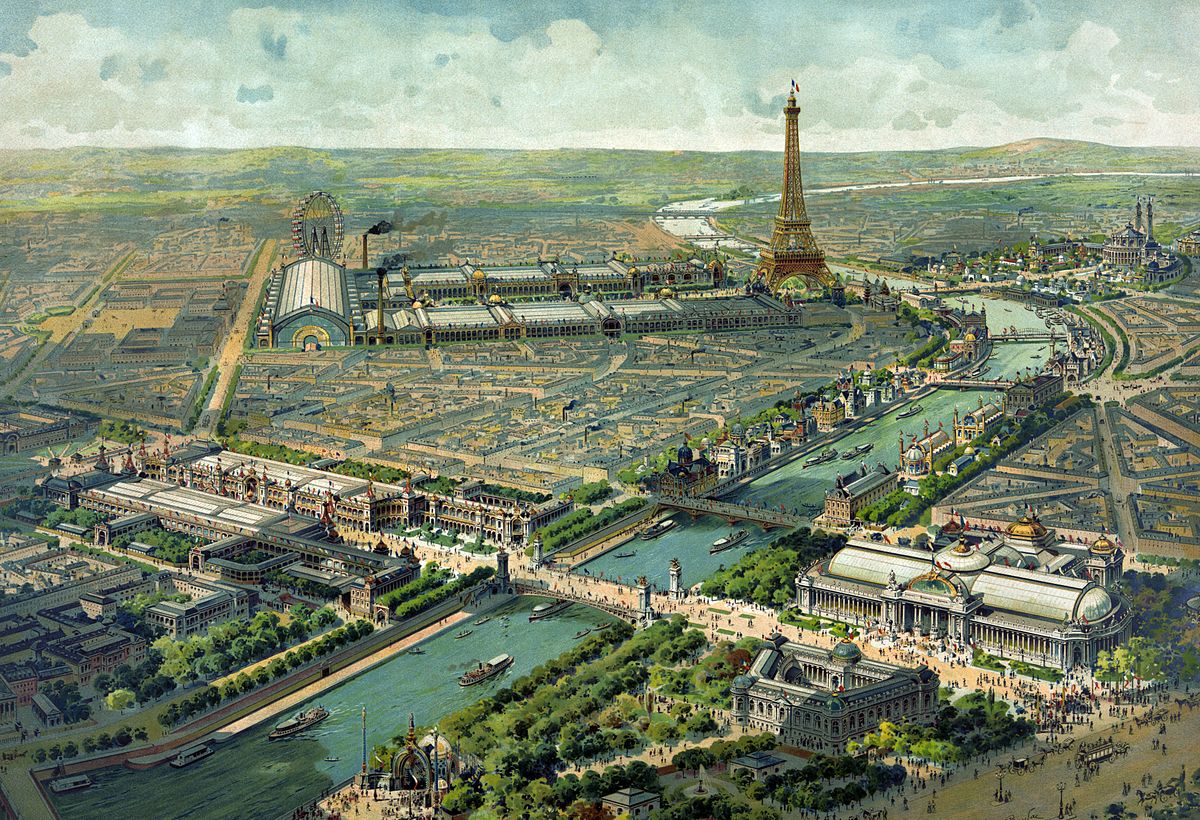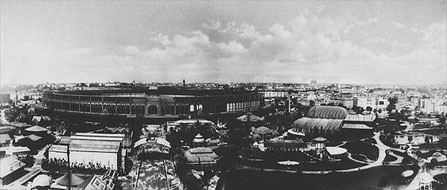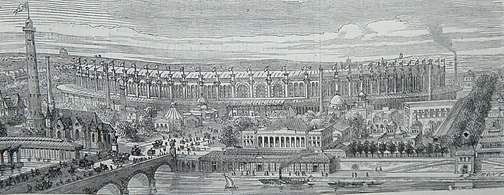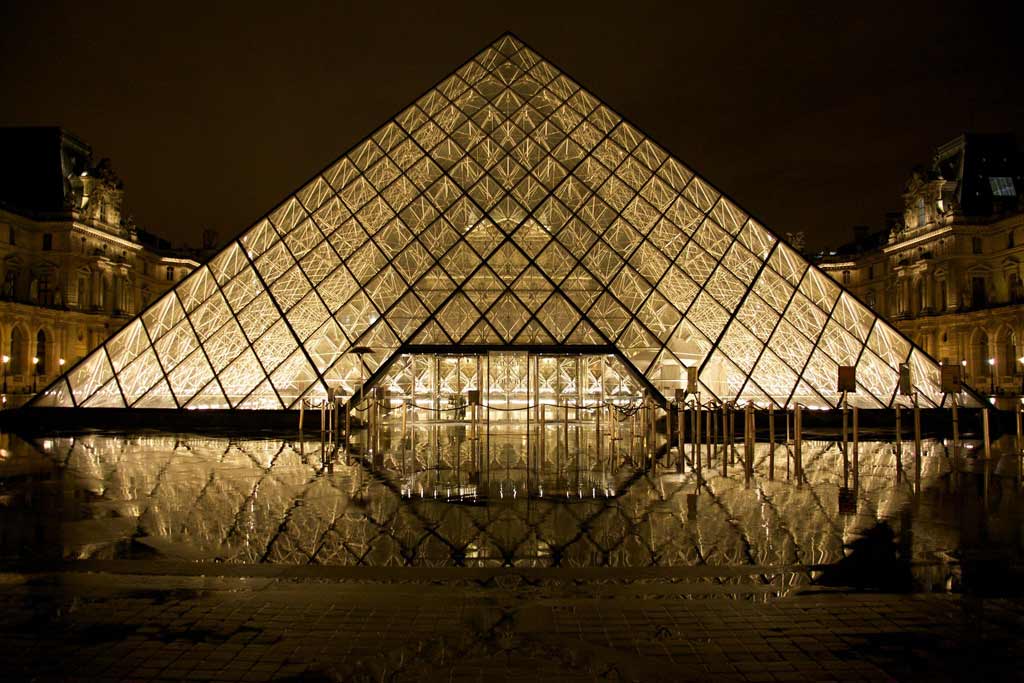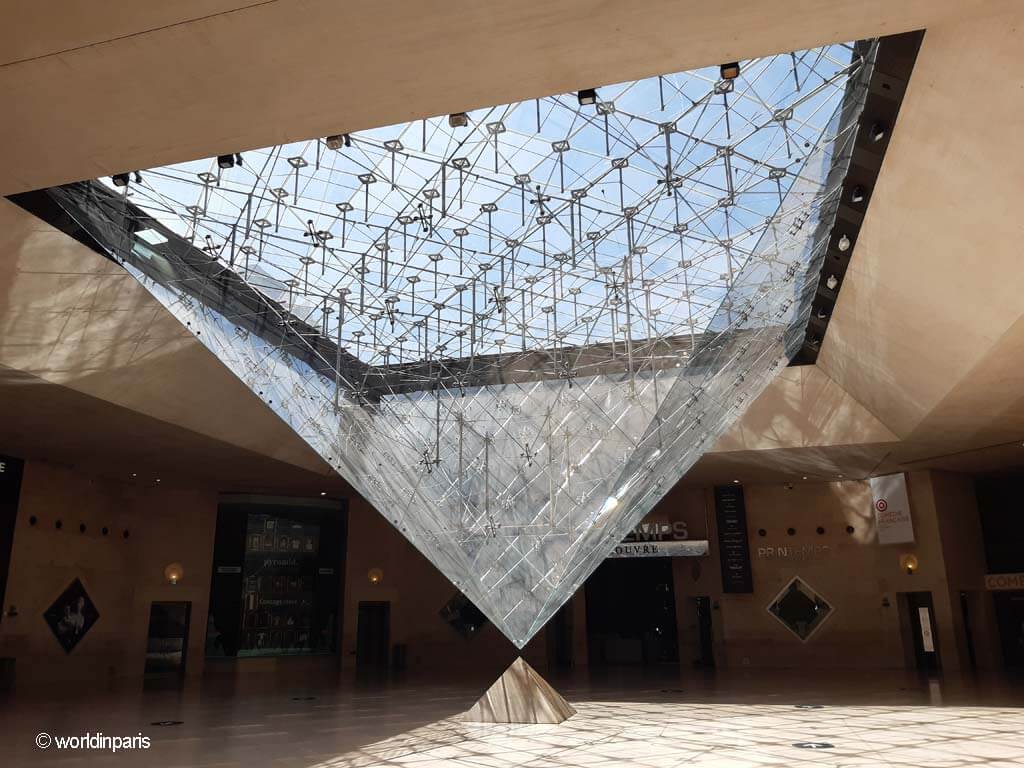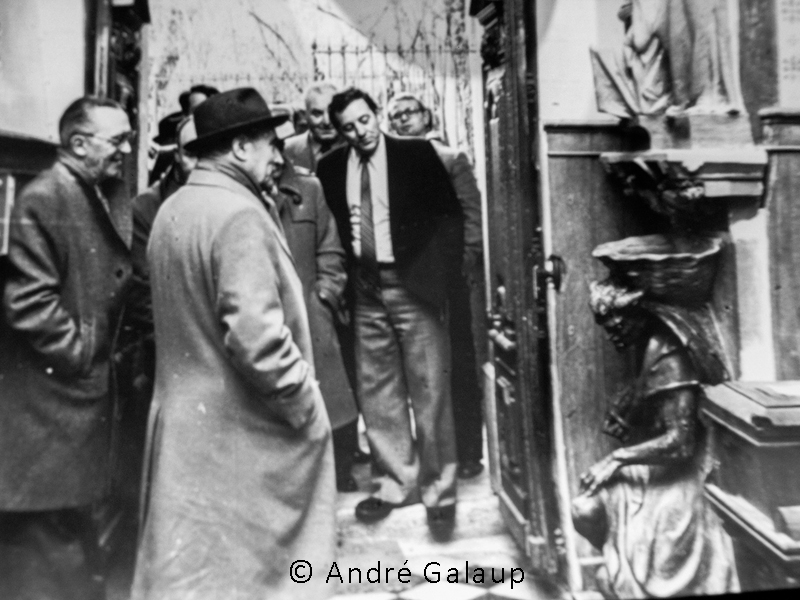The mysterious works of Mitterrand
"I feel in communication with the telluric forces of what was the whole history of France. Nothing separates me from it, and this is how I will end up". In 1981, Mitterrand announced the start of his "great works". Monuments today emblematic of the capital, and imbued with mystery. What story did the man nicknamed "The Elysian Sphinx" want to tell?
Only four months after his arrival at the Elysée Palace, François Mitterrand announced the beginnings of a pharaonic undertaking: the "Great Works", among which would be the Louvre Pyramid, the Grande Arche de la Défense, the Très Grande Bibliothèque, the Buren Columns, the Bastille Opera House... These monuments, by their location, their architecture, and the President's known attraction to what he called "forces of the spirit", gave rise to many interpretations. One has seen hidden symbols, linked to Freemasonry, to ancient Egypt, to occultism, some have read a desire to leave his mark, like a monarch... Did the president wish to transmit a hidden message? Was he a great initiate as some say?
François Mitterrand is the only French president to have expressed himself so frequently, and spontaneously, on the subject of spirituality and transcendence, which in our society, are generally confined to the register of private life. Those who knew him say that he was a man of the earth, sensitive to energies, and very intuitive. His educational background was deeply Catholic. At the age of 14, he even said he wanted to enter the seminary. He imagined a great destiny for himself, claiming to want to be "king or pope"...
Although he distanced himself from religion throughout his life, his metaphysical questioning never ceased to intensify. In 1974, he confided to the journalist Franz-Olivier Giesbert: "As a child, I was a believer. Now, frankly, I don't know. Let's say that, faced with the absence of an explanation of the world, I tend to be a deist. I am not one of those for whom everything is only chance and necessity. On the contrary, I tend to think that there is an inspiration behind the universe. Perhaps because my mind is not very scientific; perhaps because Christianity has shaped my entire youth. In particular, he had a keen interest in all expressions of belief, whether written or architectural. This last point was one of his great passions. As a student, walking the streets of Paris, he already imagined that he could change the face of the capital... Once he reached the top of the State, he committed his destiny, the work of a lifetime.
The Great Works were not part of his program. So everyone was surprised when he announced them at a press conference on September 24, 1981. His project concerned all areas of culture: from music to reading, to the plastic arts or scientific knowledge, in Ile-de-France and in the regions. Some of these projects, such as the renovation of the Louvre, were spread over a period of twenty years, reflecting his need to provide our country with the major cultural institutions it lacked. Serge Thibaut, former student of the ENS, doctor in Philosophy, and author of the Guide du Paris hermétique. Essai sur la logique symbolique des alignements parisiens (Ed. Dervy, 2016) explains that the terms used for the announcement of the great Louvre already augured a project shrouded in mystery: "with an almost mocking air, he announced his decision to "return the Louvre to its destination," an ambiguous statement because the original "destination" of the Louvre was that of being the palace of the kings of France, not that of being a museum. Did Mitterrand see himself as a king among presidents? After all, he was the first president after Napoleon III to change it, thus following in the footsteps of the monarchs of France.
The great pyramid of the Louvre, erected on the banks of the Seine like the pyramids of Egypt on the banks of the Nile in the past, is the work of which he said he was the most proud, despite the strong criticism that the project received at the time. It is no secret that the former President had a great passion for ancient Egypt. His confidante of 12 years, Marie de Hennezel, psychologist, psychotherapist, and author of Believing in the Forces of the Spirit, portrays him thus: "I think he was very obsessed with leaving a trace. He was fascinated by Egyptian mythology, all the mythologies that show that death is a transformation interested him. I was wearing this cross at the time, the Egyptian cross. It is called the key of Isis. We talked a lot about what it meant. He went to Egypt regularly, because he felt that these people, at that time, had perceived a reality.
According to Serge Thibaut, the three small pyramids surrounding the great pyramid of the Louvre raise questions. Indeed, being called "pyramidions", their function should be to top an obelisk: "either they were not pyramidions, or there were obelisks. But the fact is that the pavement on the ground reproduces, on a flat surface, obelisks under the three pyramidions. Moreover, the basins reflect the cosmos, and indicate the fertilization by the celestial force of the cosmos. This evokes in my eyes Amun-Ra, fertilizing by his seed the entire cosmos. According to him the work echoes the temple of Amun-Ra at Karnak in Egypt, where only three obelisks topped by pyramidions remain, and whose general configuration is strangely reminiscent of the Grand Louvre.
The configuration of the museum is also reminiscent of a Masonic lodge: the pyramidions echo the three barred windows that light the lodge. We also find the large spiral staircase, which symbolizes the fact that we must climb the steps to reach wisdom, or that allows us to descend to the center of the earth. In the basement, we find an inverted pyramid. Its point meets the top of another without touching, as if to illustrate once again the link between heaven and earth...
However, Mitterrand was not affiliated with those whom he nicknamed, not without mockery, "La Gratouille brothers", in reference to their characteristic Masonic handshake. Marie de Hennezel explains that he was simply a man of the earth, connected to the elements: "He called himself a bit of a druid. He had an intuitive knowledge of things. He is said to have had intellectual knowledge, but he was never initiated. I think, however, that he had this initiation in him, perhaps from another life...". She adds this anecdote: "In the Gard I have a Celtic stone but also a house in which there are triangular windows with a star... When he arrived he said to me: "but Marie, you are not a Freemason?" I answered "no". He said "me neither", and added "you are like me, you have the knowledge of symbols".
The location of the pyramid is also of great importance, as it is one of the only elements over which he really had control. Serge Thibaut specifies the symbolic aspect of this choice: "In Paris there are significant axes, the best known of which is the historical axis, and it is from their position on the axes that the monuments take on their full meaning. Let us note, for example, that the Bastille Opera House, the Grand Louvre and the Grande Arche are aligned on the historical axis, and it is their relationship to the axis that seems to me to provide the key to their meaning. The same is true of the Louvre Pyramid and the Buren columns, located on the Meridian, which means that the Louvre is at the crossroads of the two major axes of the capital. This royal road was enriched by Catherine de Medici, Louis XIV, Napoleon, and completed by Mitterrand.
"I had in the cathedral of Bourges one of the love at first sight of my life". François Mitterrand had an undisguised passion for religious architecture and for the spiritual atmosphere that it gives off: "He could feel the energy of the place. He would go incognito to Theseus, sit on a little stool at the back of the church, and say to me "I feel the energy. Do you agree that there is an incredible energy?" recalls Marie de Hennezel. This strong attraction was echoed in the construction of one of his major projects: the Bibliothèque Nationale de France. It is his largest construction: 75 000 m2, with a building in the basement, and a real forest ecosystem with 130 pine trees. The 4 square-shaped towers represent 4 open books, with unambiguous names: tower of laws, numbers, times and letters.
The choice of this titanic project by the architect Dominique Perrault is not insignificant: "With Perrault, we talked a lot about it, we wanted to reconstitute the atmosphere of a cloister. Naturally, with modern means, and without wanting to imitate the old cloisters. Thus he combined his taste for meditation, his love of books and architecture, without ever neglecting the energetic aspect: "he did surprising things for a president of the republic, approaching a stone, putting his hands on it and remaining there in silence. He would say to me: this stone is energy, these are atoms that dance", confides Marie de Hennezel.
Beyond the systematic choice of simple, geometric constructions - pyramids at the Louvre, a Hypercube at La Défense, a sphere at La Villette, refined columns at the Palais Royal, squares at the BNF - there is another common element in Mitterrand's buildings: an underground section. "The research rooms of the BNF are underground and can only be reached by vast and disturbing escalators, just as the central auditorium of the Opéra Bastille or the Géode are rooms located underground. Even the fundamental premises of the Grande Arche are underground; they are accessed through the central crater at the top of 54 steps. Whatever the Mitterrandian construction, we will have to go down into the earth, rectify our beliefs and our naiveties, and thus understand where the essential lies", explains Serge Thibaut.
Mitterrand, during his numerous exchanges with Marie de Hennezel, told her that "a head of state who does not have depth cannot have height". The psychologist, explains that he was drawing in him "a whole political reflection between what is not visible and underground and what is visible. It was important for him, and even vital to connect with his depths."
For example, the Buren columns project, which has also greatly upset the public, consists of 260 black-striped marble columns of varying heights, arranged in a sort of checkerboard pattern. But appearances are deceiving: the columns are all the same size, but are more or less buried. The second plateau is crossed by an underground river. One finds this play of apparent/dissimulated opposition, and this link between the underground, the sky and the earth. Some have seen in it the representation of a Mayan calendar, speculating in particular on the number 260. Serge adds that Daniel Buren is of Jewish faith, and that it is therefore much more likely that he wanted to represent the Temple in ruins: "This would explain the presence of underground watercourses evoking, in this case, the superposition of the two rivers of the Hebrew tradition, that of grace and celestial influences, pouring vertically onto the axis of the world and distributing themselves according to the four cardinal directions on earth. This axis of the world would be materialized by "the column of the well", the sixteenth column of the whole, entirely underground but not covered by the grill."
One of the most explicit and richly decorated works is the monument of the rights of man, located in the gardens of the Champ de Mars and built for the bicentenary of the Revolution. If at first sight, and because of its function, the building seems austere, one must go beyond appearances to discover a hidden message. Its shape is that of an ancient temple: the two columns at the entrance are replicas of those of the Temple of Solomon, called Boas and Jachin, widely used in the Masonic tradition. They have the particularity of carrying nothing, except symbolically: the starry vault. On the facades of the building, appear strange totems: characters, animals, geometric shapes ... At the top of the monument is a lizard, symbol of eternity, wisdom, and benevolence in the Egyptians. Above the door, there is an oculus crossed by the sunlight that illuminates the interior of the monument. It is surrounded by an ouroboros: snake that bites its tail, symbol in many traditions of the cyclical nature of time, life and death, of God. A gigantic bronze door forbids the entrance of the building to the "simple citizen", surprising for a monument dedicated to him? This one is engraved with a surprising mixture of symbols: we find freemason formulas, spheres and triangles that can evoke temples, Egyptian gods...
Finally, on the back side, we discover 3 eyelets arranged in a triangle with a larger hole in their center. It invites to glimpse the invisible: here, the hidden face of the door of the temple on which we discover a medallion showing a handshake, a horn of plenty and a caduceus: symbols that confirm the Masonic character of the building. The signature so dear to the president is also there: the monument is again on the two Parisian axes ... Like the great builders, can we assume that François Mitterrand wanted to place man at the heart of the divine, and recognizes their immortality?
While many intentions are attributed to the man whom humorists of the time nicknamed "God", it must be considered that if the major works were initiated by Mitterrand, this in no way implies that he was able to decide on their form or their symbolism. As he himself explained, "all major projects are the result of choices made by national and international juries. The Bastille Opera House, for example, was not at all favored by the President. In an interview with Bernard Pivot, in April 1995, he was able to affirm that he would have preferred another project to be built, at least for the exterior façade.
Finally, the achievements of François Mitterrand are certainly inseparable from a question that increasingly inhabited the last years of his life: that of the afterlife. The year of the launch of the great works, in 1981, the doctors predicted a prostate cancer and gave him only a few months to live. Jacques Attali in his book C'était François Mitterrand (Ed. Fayard), says: "When I asked him if he believed in the existence of God, he answered that he admitted the idea of a principle ordering all things, without believing in a particular religion or falling into mysticism.
What better way to tell the story of a link between heaven and earth than through architecture, and by entering into history, to defy death a little? For Serge Thibaut, "Architecture narrates, par excellence, the plot of the relationship between our world and the cosmos, the one that models the links between the Earth and the vast universe. The Great Works are undoubtedly a way of materializing this link, that is, of situating the Earth in a global whole." Perhaps the best illustration of this link is the roof of the Great Arch of Defense, a gigantic slab of marble and granite, 4500 meters in surface, entitled "The Map of the Sky". It represents a zodiac turned towards the infinite which seems, rather than providing answers, to ask questions of the vast universe. Its architect, Jean-Pierre Raynaud, confirms: "It was tempting for me to communicate with the sky, and what a window to the sky to inscribe the map of the sky."
Finally, in 1993 a much less monumental but equally intriguing work was commissioned by the Ministry of Culture. If you pass by the castles of Rambouillet, do not miss to make a detour by the sculpture of Karel Zlin, which represents a naked man on a solar boat, scanning the horizon. You will notice that this man looks very strangely like François Mitterrand. An Omerta hovers around this statue, no official documentation on the Internet, very few photos, and specialists who refuse any deciphering... The solar boat symbolizes the passage to death. Can we guess a farewell, a nakedness before his formal farewell, by his wishes addressed to the French on December 31, 1994? "Next year, it will be my successor who will express his wishes to you. Wherever I am, I will listen to him with a heart full of gratitude for the French people (...) I believe in the forces of the spirit and I will not leave you.
Excerpt from Croire aux forces de l’esprit
Exchange between Marie de Hennezel and François Mitterrand:
- You told me the other day that you were condemned by medicine, don't you think that my dream seems to suggest that I can help you live, to keep your energy for the time of a crossing, at least? But it is in the depths of your being that this happens. Not in broad daylight!
- Ah, I see, you are going to take me on the paths of the irrational, but you see, I don't mind that at all. I am basically a man of the earth, and I feel and know deep down that many things that cannot be explained come from this bridge that some people know how to make between their body and their mind.



